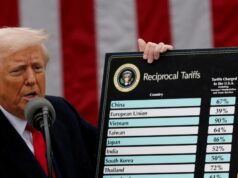NEW DELHI: This year’s Union Budget—the 10th in a row from the Bharatiya Janata Party (BJP)-led National Democratic Alliance and the fifth for Finance Minister Nirmala Sitharaman—marked a break from the past. Despite the imminent general election next year, FM Sitharaman passed on the opportunity to be populist. Instead, she served up a 25-year growth plan to transition India into a middle-income economy by 2047. At the same time the finance minister stepped up capital expenditure to continue to create assets like roads, railways and other infrastructure to a record Rs10 lakh crore—ensuring that the post-covid growth revival is not jeopardized. Another big takeaway was how this Budget put the spotlight on the middle class. For ten years they have patiently waited for their moment. It was more than just a tax giveaway.
FM Sitharaman tacitly acknowledged the coming of age of the middle class—their present count is 432 million, which is larger than the population of the United States. The FM enabled the middle class to decide how and where they would invest and save. To understand the implications of these changes we spoke to Sanjeev Sanyal, Economist and Member, Prime Minister’s Economic Advisory Council.




